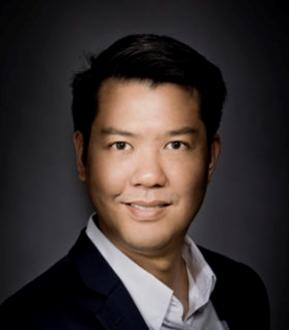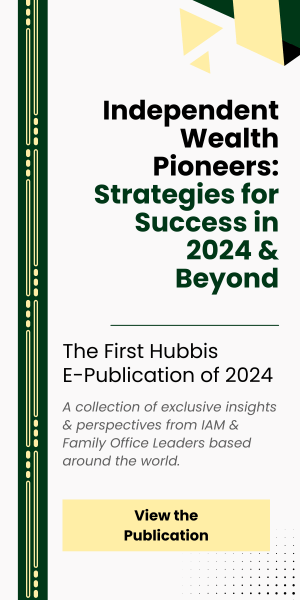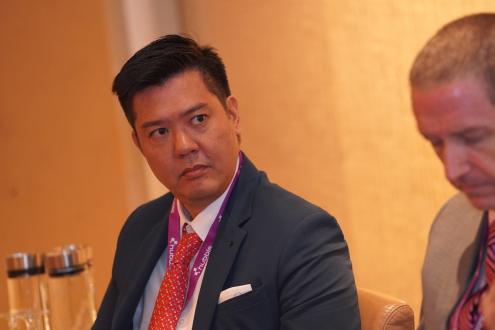Use Cases for PPLI (Private Placement Life Insurance) in Asia: A Presentation by Roger Chi, Managing Partner, 1291 Group

Jan 19, 2023
Roger Chi, Managing Partner of the high-end and specialist life insurance solutions brokerage 1291 Group, offered delegates an interesting presentation at the Hubbis HNW Insurance Forum in Singapore on October 6, focussing on the value of PPLI as a core asset holding structure as well as offering numerous advantages around privacy, asset protection, tax optimisation and succession planning solution for private clients in Asia.
What is PPLI (Private Placement Life Insurance)
PPLI (Private Placement Life Insurance), is best understood as a flexible asset holding structure (such as an offshore company or trust) for a diverse array of assets, and a solution that works in both common law and civil law countries. “It is not only bankable assets that PPLI can hold,” he explained. “Assets such as operational businesses, real estate, private equity and even digital assets can be included.”
Five key attributes of PPLI
He then told delegates how every individual and family is unique but in his many years of experience working in life and wealth solutions, there are five key themes to consider, summarised under the acronym PATEC.
PATEC stands for: Privacy protection through a compliant structure; Asset protection by law; Tax Savings, higher net returns and simplified reporting; Estate planning separate from ordinary estate; and Cash to ensure sufficient liquidity at the time of a death. And clients today need to asset protection with a strong layer of legal protection, so those assets are free from external interference and bankruptcy, simplified as to CRS and tax deferred as to growth of the assets.
The ideal solution to hold assets
He explained that the PPLI structure compared to the other structures including for example a BVI or company structure, a PIC structure, a trust structure, a fund structure, or the Singapore VCC structure, achieves all the key objectives, while those other structures only achieve some of the client’s key missions.
“In short, it is the ideal structure,” he said, “and as a result, we see a very big shift from the traditional life insurance products towards the PPLI structure, and the underwriting data we have from 2021 supports that view.”
Roger then pointed to some key differences between PPLI and VUL. “Actually, they are very similar,” he explained. “VUL is like PPLI but with a larger death cover. So, a PPLI may have a minimum death cover of perhaps 1% to 20% and VUL will typically have 200% or 300% death coverage, so just has an additional death cover to it. VUL can also accommodate a lot of different assets, and from the advisor viewpoint, it is very attractive because you not only earn the insurance fees, but you also earn the ongoing management fees on the different assets, as you do not lose that AUM.”
In short, PPLI is considered when the clients want a more modern way to hold their assets (similar to an offshore company or a trust) and a VUL is considered when the client wants to generate an additional cash payout to the next generation with the same assets.
A Powerful Combination (PPLI plus Trusts, PICs and VCCs)
Roger then highlighted that PPLI can very efficiently be aligned to other structures, such as alongside a trust, the PPLI can own a PIC (Private Investment Company, ie a BVI, or other offshore company), and PPLI can be easily combined with the Singapore VCC.
“We live in an increasingly complex world,” he told delegates, “And with CRS (Common Reporting System), FATCA (Foreign Account Tax Compliance Act), AEOI (Automatic Exchange of Information) and so forth, we see more and more combination structures, with a trust for example ideal for holding the client’s PPLI and thereby boosting succession planning efficacy, and then the PPLI owning the PIC and the structure helping with tax optimisation, achieving greater privacy and enhanced asset protection. That is why these combination structures are increasingly popular.”
The most popular combination is a Trust holding a PPLI. Many Asian families already have trusts set-up. They know and understand their structure, however over the years, the trust may have lost some of their initial benefits such as privacy, asset protection, tax optimisation due to the introduction of CRS and CFC rules. Roger added “We easily solve the problem by sliding a PPLI between the Trust and the underlying assets”.
With the popularity of the Singapore VCCs, we have also seen the combination of the PPLI holding the shares of the Singapore VCC. The one weak link of the Singapore VCC is that the shares of the VCC are not asset protected and are subject to creditor claims if something were to go wrong. The PPLI solves this issues as once the shares of the VCC are placed into the PPLI it becomes ring fenced from creditors.
Different advantages for different jurisdictions
Roger then zoomed in on specific countries and PPLI. He explained that China is top of mind as in Singapore, for example, some 80% of new family offices are from Mainland China principals.
He explained that while China has trust laws, the usage of trusts is mainly for Collective investment purposes, and the family trust application is very limited due to legal, regulatory and tax constraints. He said that in China, clients may make wills but there are statutory succession rules that apply if they don’t, under a limited forced heirship regime.
He explained that Controlled Foreign Corporation (CFC) rule and General Anti-Tax Avoidance Rules (GAAR) and came into force in January 2019. Moreover, he noted that individual income tax is 20%-45% on worldwide investment income and capital gains for anyone who is “domiciled” in China which includes any Chinese person who has still kept their Chinese Household Registration (“Houko”).
He explained that PPLI can help solve many of these issues if combined with the right approach to the family office structure, full residence and tax domicile in Singapore, and aligned to the right structures, bank accounts and compliance.
Roger then looked in more detail at the key appeals of PPLI for clients from markets such as Taiwan, Indonesia, Malaysia and Thailand.
Eyes on the targets
He concluded his talk by summarising the key advantages of PPLI policies. The insurance is a solid and well-rounded wealth planning tool, either stand-alone or in
combination with other structures. It allows the client’s assets to grow tax-preferred, achieve higher net gains within a structure that allows legal asset protection.
It also allows clients to achieve streamlined estate and succession planning. And PPLI can additionally be used in combination with high death benefit life insurance policies, which provide liquidity to take care of family, business needs and eventual taxes including inheritance and estate taxes).
A tried and true structure with a long history
He also noted that PPLI has a multi-decade history and good reputation dating back to the 1970s in the US, and is well recognised across the US, Europe and most leading economies.
“But,” he cautioned, “it is vitally important that these solutions are setup correctly with the right insurer, in first class jurisdictions with the help of highly competent advisors.”
Partnering with wealth advisors
He explained that from the viewpoint of the wealth industry RMs and advisors, the raising of the PPLI structure as a solution for private clients typically enhances those relationships.
PPLI, he said, opens the door to conversations around a host of key issues, including robust wealth and legacy planning, privacy, asset protection, tax optimisation, portability, and next generation planning. “The private bankers is not trying to sell a product but elevate the discussion as a trusted advisor, which is what we really all want to be,” he stated.
A wide range of advantages for wealth advisors
But he added that the advisor then potentially earns extra fees on that client’s AUM, as that does not need to move from their bank or existing custodial arrangement, and meanwhile at the same time, the AML liability will shift to the insurance company.
“Additionally, PPLI reduces any cross-border risks and helps reduce risk in general, with any country specific reporting minimised, because from a CRS and FATCA perspective, all the reporting is henceforth conducted by the insurance company,” he explained.
1291 Group Leading the Way
The 1291 Group Ltd is a global financial services group, offering tailor-made wealth protection plans to private individuals and investment professionals. The “1291” name refers to the historical year of birth of Switzerland as a nation. The 1291 team is comprised of tax lawyers, wealth planners from private banks, insurance specialists, and trustees with many years of experience in wealth protection, international tax, legal and compliance issues, as well as the use of insurance in wealth and legacy planning.
Their private clients are high net worth families from all over the world. 1291 is licensed in over 36 countries, has compliant solutions for over 45 countries and works with over 48 insurance carriers in 15 jurisdictions. The firm has 14 offices around the world, including the headquarters in Zurich, as and in Asia both Hong Kong and Singapore.
1291 is the number one PPLI broker and VUL broker around the world. In addition, it also offers a wide range of other solutions including traditional high death benefit policies such as UL and Whole of Life. From their Singapore office, the business is split roughly half traditional products and half structuring and more complicated PPLI structures.
Roger closed the talk by saying, “Private Placement Life Insurance is the ideal way for HNW families to hold their assets in this day of increasing transparency. We at 1291 are the market leaders in this high complex topic and we are here to assist you”

Managing Partner at 1291 Group

More from Roger Chi, 1291 Group
Latest Articles






